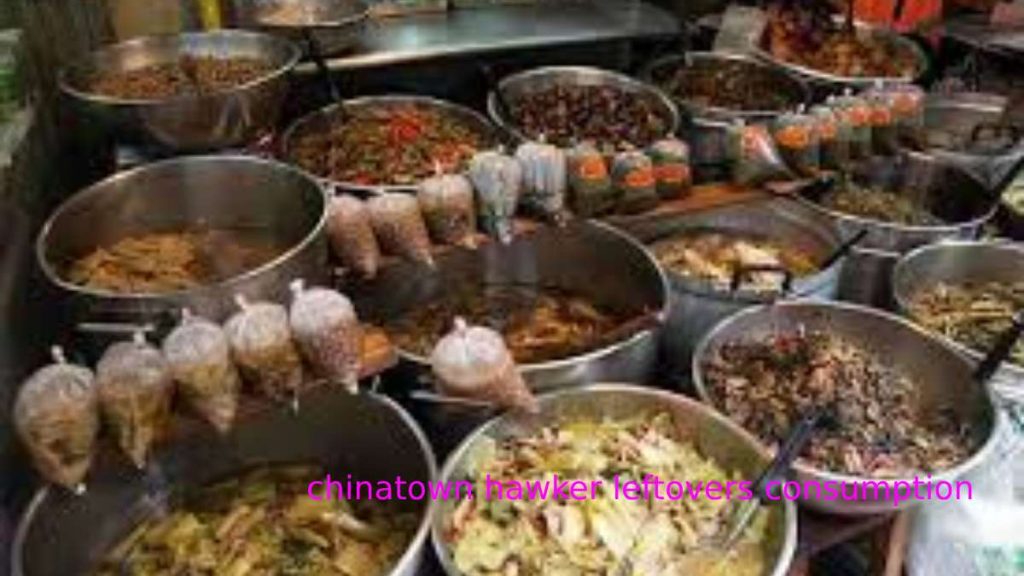Introduction:
Chinatown is a famous place where people appreciate delicious and inexpensive street food at hawker centres. These food courts are always busy with locals and tourists. But recently, a strange and worrying trend has been noticed in Chinatown hawker leftovers consumption. This means some people are eating food left behind by others at these hawker centres. This issue is getting attention and raising many questions about health, poverty, and food waste.
What is Chinatown Hawker Leftovers Consumption?
Chinatown hawker leftovers consumption means taking and eating leftover food from other people’s plates at hawker centres. Several people convey out this because they are ravenous and cannot give to own their food. Others declare they do it to prevent good food from exit to waste. Sometimes, people even take food from trays where used plates are returned.
Why Are People Doing This?
There are a few main reasons why people are eating leftover food from hawker centres:
1. High Cost of Living:
Life is getting more expensive in cities like Singapore. Some old people, jobless people, or poor individuals cannot afford to buy food. Instead of begging or going hungry, they take leftover food from tables.
2. To Stop Food Waste:
Some people believe it is wrong to throw away good food. They think eating leftovers helps reduce food waste. They want to use all the food that is still safe to eat, even if someone else left it behind.
3. Old Cultural Habits:
In some cultures, wasting food is not acceptable. Older people who went through hard times in the past may think it is okay to eat leftover food because they believe every bit of food is important and should not be thrown away.
How Are People Responding?
Many People have many views about the restaurant Chinatown hawker leftovers consumption:
-
Some Feel Sorry:
Many people feel sad when they see someone eating leftovers. They comprehend that these people are starving and require help. Some even post videos online asking for the government to provide support.
-
Others Feel Disgusted:
Some people find it dirty and unsafe. They worry that sharing food like this can spread diseases. Seeing someone eat from a used plate can make others feel uncomfortable or sick.
Health Dangers:
Eating leftovers from strangers is risky. Here why:
- Germs and Bacteria: The food may have germs from someone’s saliva, dirty hands, or even insects. This can cause stomach problems or sickness.
- Unknown Health Problems: You don’t know if the person who left the food was sick. Their leftovers might spread illness to others.
- Dirty Tray Areas: If the food is taken from return trays or near garbage bins, it is more likely to be unsafe.
What Are Authorities Doing?
In places like Singapore, the government is worried. They have put up signs to tell people not to eat leftovers. Health officials say it’s not safe and should not be allowed, even if the idea is to reduce food waste.
Some good things are also happening:
- Free Food Programs: Charities and kind people are offering free meals or food coupons to help those in need.
- Apps to Share Leftover Food: Some apps now let food stalls sell leftover food at a lower price before they close. This helps poor people buy cheap food and reduces waste.
Is It Right or Wrong?
This issue is not simple. On one side, people don’t want to waste food. On the other side, no one should have to eat from a strangers plate. Its not safe and not respectful.
Instead of letting people eat leftovers, we can:
- Deliver food to the poor in hygienic and secure ways.
- Teach people to order only what they can finish.
- Support free meal programs in hawker centres.
Conclusion
Chinatown hawker leftovers consumption displays a bigger tribulation of desire, high living costs, and food garbage. While several see it as beneficial, others consider it is harmful and miserable. The best solution is to help those in need through safe and kind ways. Everyone deserves a proper meal, not one taken from a dirty table. By working together, we can reduce waste and support those who are struggling.
